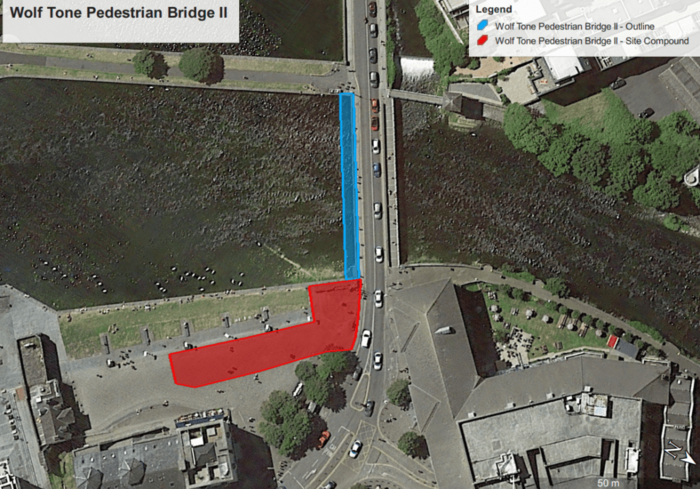Engineers are preparing to attach a new cantilevered pedestrian walkway to the downstream side Wolfe Tone Bridge in Galway city centre ahead of schedule.
The new walkway will be substantially similar to the cantilevered boardwalk attached to the northern or upstream side of the bridge in 2004.
Steel fabricators at Pat Rynn Engineering are understood to nearing completion of the boardwalk, built in sections, which should be fitted to the existing bridge structure in the coming months.
Works are understood to be progressing well after power lines near the bridge were successfully diverted underground. This involved burying ESB ducting under the footpath on Claddagh Quay, and sinking new manholes on the city-side of the bridge.
The project was commenced in August, with a delivery target of summer 2024.
A pedestrian crossing with lights has been installed on the western side of the bridge at Raven’s Terrace, although not yet activated, and another crossing will be installed near the Leonardo Hotel (formerly Jurys Inn ).
City Councillor Níall McNelis runs a business opposite the bridge and has observed the construction.
“I was surprised there was no cycle lane included, but I presume the design engineers are going on best practise. The four bridges [across the Corrib] are the break points of city congestion. We need to look at radical ideas, such as a city one-way system. Again, the city ring road project will be key to this,” he said.
In its submission to the Galway City Integrated Traffic Management Programme Consultation in 2015, the Galway Cycling Campaign suggested Wolfe Tone Bridge be closed to all motor traffic except public transport, such as taxis and buses during certain times of day, similar to the College Green “bus gate” in central Dublin. M50-style electronic bridge tolls were also suggested as a method of reducing city-centre congestion.
Some Claddagh residents have noted that the old steps down to the river next to Wolfe Tone bridge will be covered by the new works, and have suggested a memorial plaque be erected where Claddagh women once washed clothes in the river.

